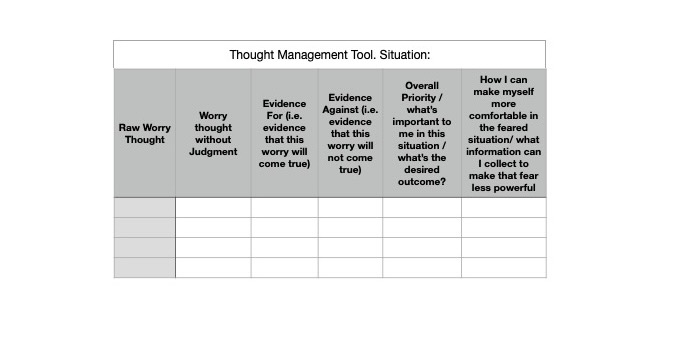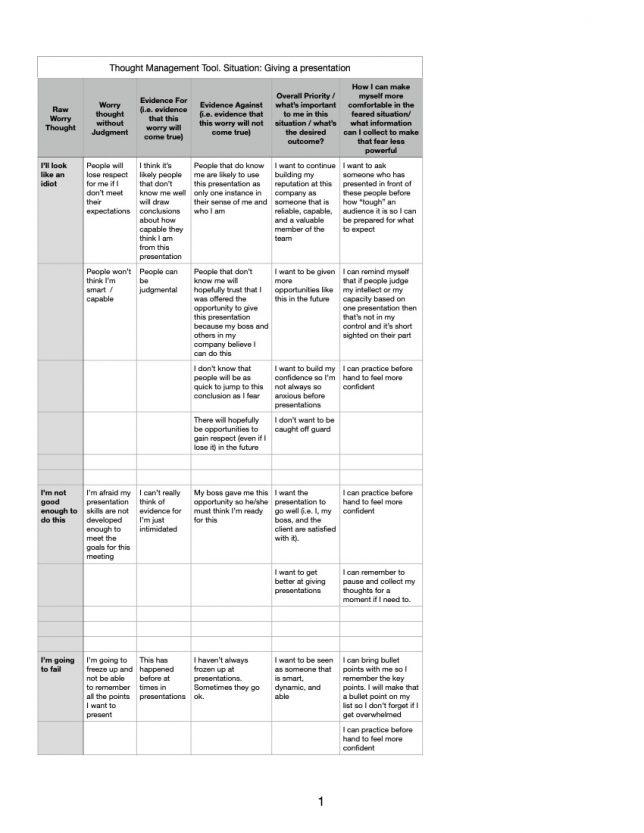- This kind of of thinking, that life is easier for others and more difficult for us, is tempting at a time when we are hopeless or struggling to manage. The thought is often unhelpful, un-motivating, and channels our inner sense of helplessness. Here are a few counter-thoughts to hold onto that may help you approach these moments differently:
- (1) Often times when we think “it’s easier” for others what we actually mean is “it’s intuitive” for others. Intuition develops with practice, modeling, and training (over time). Seen through this lens, over time and with practice, something new (and perhaps more helpful) could become intuitive to you too.
- (2) Just because someone knows how to take care of themselves doesn’t mean they’ve had an “easy” journey to that point. Instead, it simply means they’ve found what works for them. Often times people who have the ability to cope have taken a path of learning and growth from prior struggles.
- This learning often means reflecting on whether or not our chosen (or perhaps automatic) coping methods truly help us, and holding a willingness to try new ways that may not be intuitive or comfortable to us (until we practice them again and again). The more we can learn and accept what serves us (and avoid what doesn’t) the “easier” coping becomes
- (3) Sometimes when we get stuck on “it’s easier for them” what we’re really stuck on is a struggle with fairness; it isn’t that they are “coping better” its that they’ve got less to cope with. When we get preoccupied with “fairness” we are often fixated on factors outside of us, and we cannot resolve our personal pain from that orientation.
- Though we can always work to make to world more fair, we have to take care of ourselves in the interim. When we can take our experiences with unfairness head on, and can focus on what a lack of fairness has meant for us on a personal level (including our losses and pain) we can work to resolve pain around “unfairness” and its impact on us.
- (4) Not everyone has the same triggers and sensitivities. What floors one person may feel manageable (i.e. “easy to cope with”) to another. Remember that what we struggle with is often a reflection of our prior experiences, with unresolved experiences tending to cause more pain than ones we have been able to work through and come to terms with.
- (5) We don’t all feel our feelings with the same range and intensity. Some of us have much stronger and more intense experiences of all our emotions based on how our bodies process them. This means some of us may find ourselves in deeper emotional states than those around us; this is a more intense experience in life with positives and drawbacks.
- (6) We can only see what people show us. Even if we’re highly skilled at reading people, we still can’t see it all. It may look “easier” because someone is invested in it “looking” easier, which doesn’t mean it is.
Regardless of how “easy” or “hard” life is, the truth is, coping comes more intuitively to some of us than others, and life does not evenly distribute objectively difficult times. Put simply, when we think about how “hard” or “easy” life is for us (or others), we are thinking in judgmental terms (i.e. we are using statements to evaluate rather than describe what we notice and observe). I have a whole series on how judgments limit us (see comments for how to find those prior posts), but big picture, today’s post illustrates just how much information we lose about what’s actually effecting us on a personal level when we rely on judgments instead of working towards describing, owning, and understanding a topic at hand.
In today’s post I offer six different ways to challenge how we can think more descriptively through how “hard” or “easy” our lives feel, and there are infinite other ways to deconstruct the judgment of “it’s easier for others”. The less we rely on judgmental statements (which often include easy, hard, right, wrong, good, bad, should, shouldn’t) the closer we can get to understanding, working through, and addressing what’s really upsetting for us.
If you found today’s deconstructions didn’t quite fit for you, think about how else you might say “they have it easier” without using the evaluative statements listed above. Once you can get to the heart of what you’re *really* upset about, you can then address whatever that is.
Next, your job becomes to resist to the temptation to rely on that familiar stance of “it’s easier for them” at a moment when you are struggling. This means challenging ourselves to be present in a different way and pointing your thoughts and energy in the direction that helps you deconstruct the judgment rather than burrow into it.
What may be tempting (or intuitive) to you, is to stay in the familiar “it’s easier for them” mindset, but we have to be responsible for turning our focus and attention elsewhere if we want to build new ways of coping. Eventually, pulling away from the judgement and going into our experiences may become intuitive, but it takes work, practice, intentionality, and time.
Comments:
- Are you realizing you might lean on judgmental thinking? Learn more about how to recognize judgmental thoughts, dive deeper into understanding how they limit us, and get guidance on deconstructing a judgment from these linked prior posts.
- One of the hangups I list (about fairness) is actually a different kind of hangup all on it’s own, called a “cognitive distortion” that will someday have its own post. If you related strongly to struggling around issues of “fairness” you may find it helpful to review this article that explains what a cognitive distortion is, and how to recognize and challenge it. You may also benefit from working to challenge “shoulds” (Like it should be just as easy for me as it is for her, life should be more fair etc). Big picture, issues of fairness are incredibly complex, and, if fairness is a value we hold, we are often best served to make our decisions through the lens of that value rather than to expect the world to abide by fairness as a “rule” or “law”. This relates somewhat to another post I have on how “fairness” can effect us, which may also be helpful to dive into.
- Today’s post, in addition to include the “non-judgmentally” mindfulness still, also includes applications of the “effectively” mindfulness skill and the “willing” and “Turning the Mind” distress tolerance skill from Marsha Linehans DBT Skill’s training manual (Full Citation: Linehan, M. M. (2014). DBT (R) skills training handouts and worksheets, second edition (2nd ed.). Guilford Publications.).



